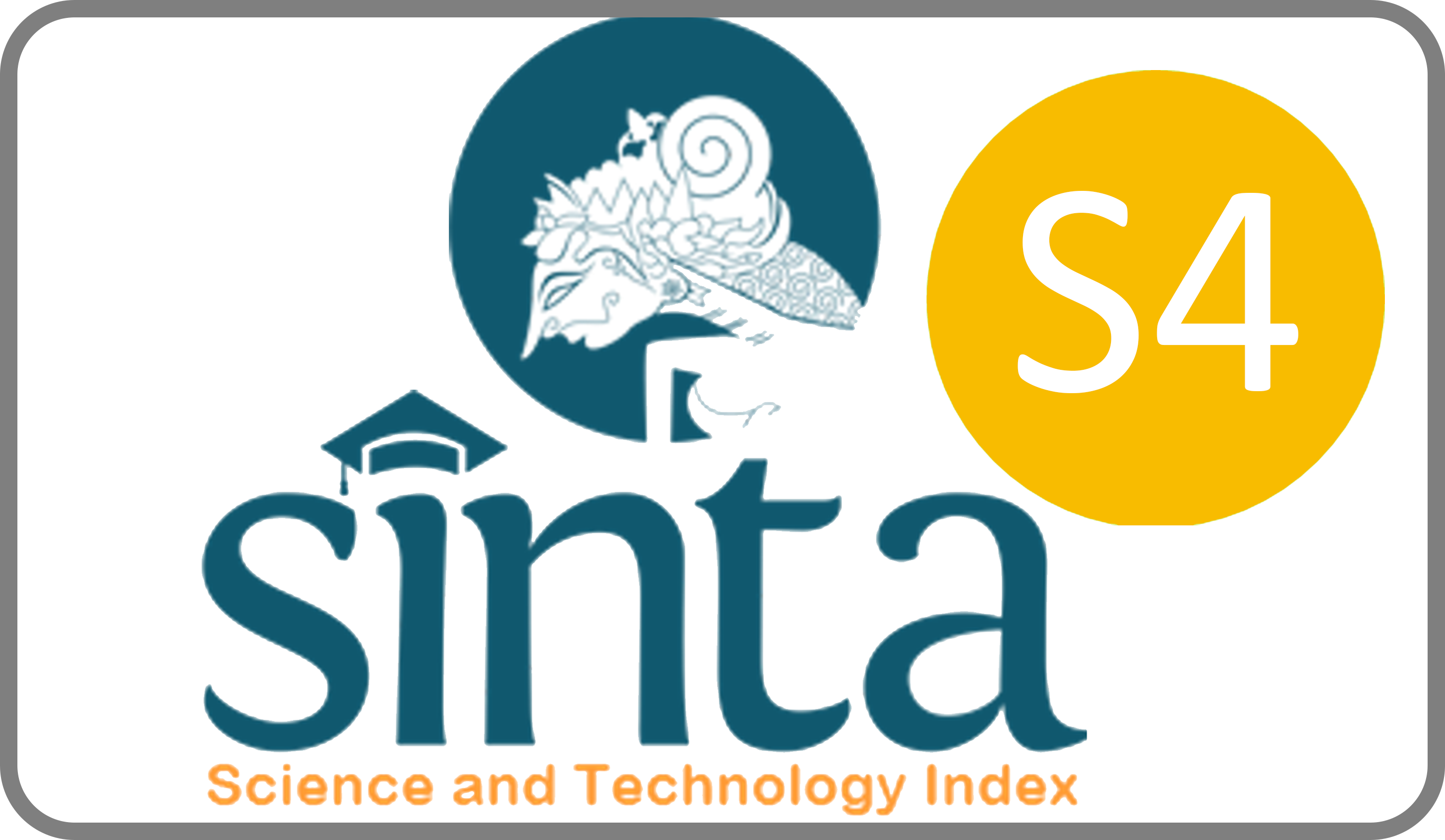BIOPRODUCT DEVELOPMENT TECHNOLOGY FROM MICROBE TO BUILD ENTREPRENEURSHIP OF PENJARINGAN SARI RUNGKUT RUSUNAWA RESIDENT
Downloads
Introduction: in general, residents of flats are a low-income group of people. Economic improvement for Rusunawa residents with concrete efforts is needed to be able to alleviate poverty. Purpose: the community service program's touch is aimed at initiating entrepreneurship among the residents of the flats through providing training on making a variety of microbial bioproducts with economic value, targeting PKK Rusunawa Penjaringan Sari, Rungkut-Surabaya mothers. Method: Community service activities are carried out in 3 stages, namely (1) survey and coordination, (2) workshops and training on making bioproducts from microbes, and (3) Evaluation of activities. Results: Community service participants who took part in the workshop on microbial bioproducts experienced an increase in knowledge about the meaning of microbial bioproducts, types and manufacturing technology. The number of participants who scored 60 and above increased by 95% in the post-test compared to the pre-test. The workshop was able to build participants' skills in making three types of microbial bioproducts, namely yogurt, biosurfactant and liquid organic fertilizer. Positive responses in the form of sentences were very useful for the workshop material, many were focused on the results of the feedback. Especially for yogurt bioproducts, almost all participants considered it very tasty, not inferior to commercial products already on the market. This shows an indication of a very high level of satisfaction. Conclusions: the understanding of community service participants on microbial bioproduct material increased through the workshop, indicated by an increasing of the participants who scored above of 60 in the post-test by 95% compared to the pre-test. Community service members' feedback through testimonials showed that 100% of the participants responded that it was very useful, indicating that the participants were very satisfied with the activity. The workshop can equip participants with skills in making yogurt bioproducts, biosurfactants and liquid organic fertilizers, which in the future are expected to be able to initiate entrepreneurship for the participants.
BPS Provinsi Jawa Timur 2022, Jumlah Penduduk Miskin menurut Kabupaten/Kota di Jawa Timur (Ribu Jiwa), 2019-2021. https://jatim.bps.go.id/indicator/23/421/1/jumlah-penduduk-miskin-menurut-kabupaten-kota-di-jawa-timur.html.
Kemenko PMK, 2022. Optimalkan Bonus Demografi, Agar Tak Terjebak di Pendapatan Menengah. https://www.kemenkopmk.go.id/optimalkan-bonus-demografi-agar-tak-terjebak-di-pendapatan-menengah
Peter F. Stanbury, Allan Whitaker, Stephen J Hall, 2017. Principles of Fermentation Technology., 3rd Edition, Butterworth-Heinemann ,Elsevier Ltd. Bodmin, Cornwall. PP.619-685
Jakub Kiep´s and RadosÅ‚aw Dembczynski, Current Trends in the Production of Probiotic Formulations. Foods 2022, 11, 2330. https://doi.org/10.3390/foods11152330
C. Arun and P.Sivashanmugam , Investigation of biocatalytic potential of garbage enzyme and its influence on stabilization of industrial waste activated sludge. Process Safety and Environmental Protection. 2015, 9: 471-478
JawaPos, 2022, Kaget Status MBR Dicabut, Gagal Dapat Rusunawa Milik pemkot Surabaya, https://www.jawapos.com/surabaya/22/07/2022/kaget-status-mbr-dicabut-gagal-dapat-rusunawa-milik-pemkot-surabaya .
Biosurfactant from Bacillus subtilis DS03: Properties and Application in Cleaning Out Place System in a Pilot Sausages Processing.
Cruz Mendoza I, Villavicencio-Vasquez M, Aguayo P, Coello Montoya D, Plaza L, Romero-Peña M, Marqués AM, Coronel-León J.Microorganisms. 2022 Jul 27;10(8):1518. doi: 10.3390/microorganisms10081518.
Ghazi I, Fernandez-Arrojo L, Gomez De Segura A, Alcalde M, Plou FJ, Ballesteros A.J., Beet sugar syrup and molasses as low-cost feedstock for the enzymatic production of fructo-oligosaccharides. Agric Food Chem. 2006 Apr 19;54(8):2964-8. doi: 10.1021/jf053023b.PMID: 16608216
Anonimous, Yogurt Production. http://www.milkfacts.info/Milk%20Processing/Yogurt%20Production.htm (retrieved, July 23, 2023)
Carolina Moyano, July 2020. Fermentation Of Yogurt And The Chemistry Behind It, https://www.foodunfolded.com/article/the-chemistry-behind-the-fermentation-of-yogurt (Retrieved July 15 2023)
Eda E. Kilic, Ibrahim Halil Kilic and Banu Koc., Yoghurt Production Potential of Lactic Acid Bacteria Isolated from Leguminous Seeds and Effects of Encapsulated Lactic Acid Bacteria on Bacterial Viability and Physicochemical and Sensory Properties of Yoghurt, Journal of Chemistry, Vol 2022, Article ID 2683126:1-10.
Sandra Stamenkovic, Vladimir Beskoski, Ivana Karabegovic, Miodrag Lazic, and Nada Nikolic, Microbial fertilizers: A comprehensive review of current findings and future perspectives, Spanish Journal of Agricultural Research, 2018 , 16 (1): 1-18.
Endang Triwahyu Prasetyawati, Tini Surtiningsih, Ni'matuzahroh, Purkan, Ana Mariatul Khiftiyah, Silvia Kurnia Sari, Screening of Biosurfactant Production by Bacillus spp. Potentially Inhibiting the Growth of Ralstonia solanacearum, AIP Conference Proceedings, 2022, 2554, 090008. https://doi.org/10.1063/5.0106613
N Halimah, A Baktir and P Purkan, Exploration of Cellulolytic Microorganism as A Biocatalyst Candidate for Liquid Fertilizer, IOP Conf. Ser.: Earth Environ. Sci. 2019, 217 012021. https://doi.org/10.1088/1755-1315/217/1/012021
Arissirajudin, R.; Hadi, S.; Safa, A.; Purkan, P., Utility of Saccharomyces cerevisiae As Probiotics to Induce Protease Production for Worms Feed Improvement, IOP Conf. Ser.: Earth Environ. Sci. 2018, 217 012032, https://doi.org/10.1088/1755-1315/217/1/012032
Purkan, P., Safa, A., Abdulloh, A., Hermansyah, H., Kim, S.W.In-situ biodiesel synthesis from microalgae nannochloropsis oculata using nio nanocatalyst, Rasayan Journal of Chemistry, 2021, 14(3), pp. 2097–2103
Copyright (c) 2023 Purkan Purkan, Sofijan Hadi, Fatiha Khairunnisa, Afaf Baktir, Sri Sumarsih

This work is licensed under a Creative Commons Attribution-ShareAlike 4.0 International License.
JLM by Unair is licensed under a Creative Commons Attribution-ShareAlike 4.0 International License.
1. The journal allows the author to hold the copyright of the article without restrictions.
2. The journal allows the author(s) to retain publishing rights without restrictions
3. The legal formal aspect of journal publication accessibility refers to Creative Commons Attribution Share-Alike (CC BY-SA).
4. The Creative Commons Attribution Share-Alike (CC BY-SA) license allows re-distribution and re-use of a licensed work on the conditions that the creator is appropriately credited and that any derivative work is made available under "the same, similar or a compatible license”. Other than the conditions mentioned above, the editorial board is not responsible for copyright violation.


















